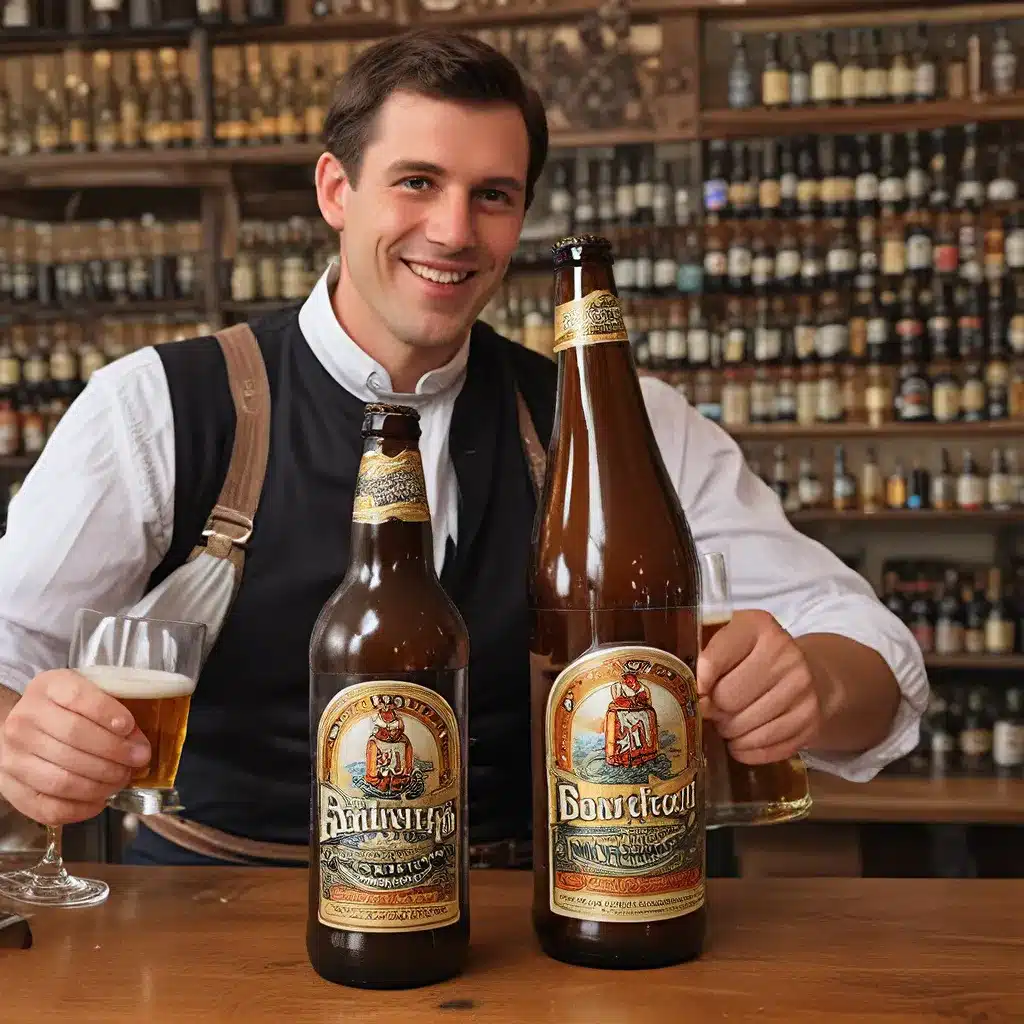
Imagine stepping into a bustling, turn-of-the-century American pub – the kind where the air is thick with the scent of freshly poured lager and the sound of laughter and clinking glasses echoes off the walls. What you’d likely find is the legacy of a group of enterprising Bavarian immigrants who, over the course of the 19th century, transformed the American beer landscape forever.
Throngs of German immigrants flocked to the growing industrial hubs of the American Midwest in the 1800s, bringing with them the yeast, recipes, and know-how to produce the light, effervescent lager beers that would soon captivate the national palate. These “Bavarian Beer Barons” – names like Anheuser, Busch, Pabst, and Schlitz – would go on to build beer empires, cemented their dominance through clever marketing and adaptations to new technologies, and forever changed the way Americans drink.
The Rise of the Lager Kings
As the 19th century dawned, the American beer landscape was dominated by heavier, darker ales. But the arrival of German immigrants – nearly 5 million of them between 1820 and 1900 – would soon shift the tide. These new arrivals brought with them the secrets to crafting the pale, bubbly lager beers that had long reigned supreme in their Bavarian homeland.
The key difference? Lagers required a longer, slower fermentation process at slightly above-freezing temperatures, as opposed to the quick turnaround of ales. This allowed lager makers to produce larger batches and store the beer for longer periods – a critical advantage in an era before modern refrigeration. “An estimated 4,000 German breweries popped up around the country by the mid-1870s,” according to beer historian Carl Miller, becoming neighborhood hubs in growing cities.
Among these pioneering brewers were titans like Adolphus Busch, who arrived in St. Louis as an 18-year-old German immigrant and within two decades had married into the Anheuser brewing dynasty and helped transform it into a national juggernaut. There was also Frederick Pabst, a former steamship captain who bought out his father-in-law’s Milwaukee brewery and began winning international awards for his “Pabst Blue Ribbon” lager. And Joseph Schlitz, who made a savvy move during the Civil War by shipping ice-chilled barrels of his lager down the Mississippi to thirsty German soldiers, helping spread the German-American beer craze.
Conquering the American Palate
Of course, getting non-German Americans to trade in their ales for these novel lager beers was no easy task. The Bavarian Beer Barons had to get creative – and they weren’t afraid to capitalize on even the direst of circumstances.
When the Great Chicago Fire of 1871 devastated the city’s breweries, Pabst and Schlitz quickly seized the opportunity. Pabst used his steam-powered ships to rush barrels of lager south, while Schlitz transported his by rail and gave away free beer to the city’s homeless survivors, earning widespread goodwill. And a decade earlier, Schlitz had similarly leveraged the Civil War, shipping ice-cold lager down the Mississippi to quench the thirst of the 200,000 German immigrants fighting for the Union Army.
But the Barons didn’t stop there. They also invested in new technologies like steam engines and refrigeration to improve shipping and storage, allowing them to extend the reach of their lagers nationwide. And at the 1893 Chicago World’s Fair, Pabst and Schlitz went head-to-head, showcasing their beers to over 27 million visitors – with Pabst’s “Best Select” earning top honors and being renamed “Pabst Blue Ribbon” forevermore.
The Battle for American Morals
As the German-American beer industry grew, it faced an unlikely adversary: the temperance movement. Driven largely by Anglo-Protestant “nativists,” these anti-alcohol crusaders saw the influx of lager-loving German and Irish immigrants as a scourge to be stopped.
In the 1850s, the so-called “Know-Nothing” party in cities like Chicago and Cincinnati went so far as to increase saloon license fees, hire nativist police forces to shutter bars on Sundays, and even instigate violent riots against German communities and breweries. The battle even spilled onto the baseball diamond, with the nascent National Baseball League banning alcohol sales and Sunday games in a bid to “sanitize” the sport’s image.
But the Bavarian Beer Barons were undeterred. They fought back by establishing Biergartens – open-air beer gardens where families could gather, socialize, and enjoy their beloved lagers in a wholesome setting. These became hubs of German-American culture, where the value of beer as a social, communal experience was on full display.
Weathering the Storm
Even as the 20th century dawned, the Bavarian Beer Barons faced new challenges. World War I brought a surge of anti-German sentiment that made life and business harder for German-Americans. And in 1920, the passage of Prohibition dealt a devastating blow, forcing the closure of all beer gardens and breweries nationwide.
Yet, the industry’s titans found ways to adapt. Pabst Blue Ribbon, Schlitz, Miller, and Anheuser-Busch managed to weather the storm, emerging from Prohibition’s end in 1933 as the national brands we still know today. Their ability to pivot and evolve is a testament to the enduring legacy of the Bavarian Beer Barons who, through savvy marketing, technological innovation, and a resilient entrepreneurial spirit, secured the lager’s place as America’s most beloved libation.
So, the next time you find yourself in The Up & Under Pub – or any other watering hole, for that matter – sipping on a crisp, golden lager, pause for a moment and raise a glass to the Bavarian visionaries who made it all possible. Prost!

